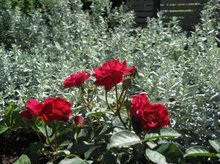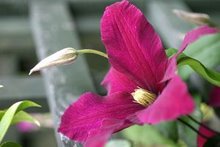Garden planning is no small or insignificant task. Having a large number of blossoming tasks in your garden can certainly be a pleasant sight to watch but it requires a lot of hard work and wise decisions on your part for the plants to attain that stage. Proper research is required to make your garden look elegant and cost effective at the same time. If you don’t devote proper time and energy to its maintenance, you will have to incur a lot of expenditure to bring it up to shape again.
Effective Garden Planning
Garden planning is no small or insignificant task. Having a large number of blossoming tasks in your garden can certainly be a pleasant sight to watch but it requires a lot of hard work and wise decisions on your part for the plants to attain that stage. Proper research is required to make your garden look elegant and cost effective at the same time. If you don’t devote proper time and energy to its maintenance, you will have to incur a lot of expenditure to bring it up to shape again.
Garden for all Seasons

All great gardens have one thing in common. That is, they offer something during each of the four seasons. Through spring and summer the colorful flowers of perennials, annuals and flowering trees and shrubs are the focal point in the garden. Once the summer flowers begin to fade, the brilliant, colorful foliage of autumn brightens the garden. In the winter, it's the evergreens, berries and bark which provide the garden with color as the form and shape of the plants become more prominent.
Green is the dominant color in the garden in the spring as everything seems to be rapidly putting out new growth. The bulbs and perennials which do flower in the early spring do so against a backdrop of green foliage and brown earth. Bulbs are earliest blooming plants in the garden and are essential to the spring landscape. Some bulbs will even provide color until more perennials begin to bloom in May and June.
Early flowering perennials such as iris range in color from white to yellow to purple and in size from a few inches to 4 feet. For spring foliage, plant some hosta, they grow in a wide variety of greens, from blue-green to yellow-green and they're the perfect backdrop plant for the spring flowers.
Perennial borders peak in mid summer as a wide range of sun-loving flowers begin to bloom. Part of the mix include some leftovers from spring and, towards the end of summer, there are signs of the later blooming flowers as well. Annuals are also in full bloom mid-summer. Though most have finished flowering, fully leafed out shrubs can add a lushness to the garden.
A third wave of blooms begin brighten up the garden once again as the summer flowers begin to fade. The colors in the garden begin to change a bit in the fall with many perennials blooming in shades of yellow, orange and purple. Among these flowers are the annuals, which continue to flower until the first frost. Later in the season, the flowers, especially those of the sedum and black-eyed Susan, turn into brown and rust colored seed heads. They fit in perfectly with the colorful fall foliage of the surrounding trees. The foliage of the late season perennial is attractive on its own. Once the blooms of the these flowers fade deciding whether to cut them back is up to the individual gardener. Some perennials will collapse to the ground anyways while others will remain standing though the winter with their showy seed heads creating off season interest in the garden.
Winter, the season in which many gardeners forget about the landscape, can offer color and visual interest through evergreen shrubs, bark, plant form and seed heads. For example, a clump of ornamental grass could be left standing through the winter. Redtwig dogwoods are great against the snow and birch trees have colorful, flaking bark. The winter landscape truly would be empty with the hardy evergreen trees and shrubs. Garden walls and fences become more prominent as the foliage which screens them in the summer disappears. Hedges, as well as walls, make a stronger statement in winter. protecting houses from icy blasts and sky-high heating bills.
With some careful planning, it is possible to have a beautiful garden year round. Even in winter, when everything seems to be stark and barren. A few choice shrubs or trees can provide winter interest and a well thought out garden can flower from early spring until the first frost.
About the Author
R Birch is the publisher of http://www.GardenListings.com , a garden resource website. Visit http://www.GardenListings.com/Resources.htm for all kind of gardening advice.
What Makes For A Beautiful Garden?

What makes a garden look good? Generally, you want shrubs and trees, plus grass to soften the hard, angular lines of your house and lot. Some people eliminate grass altogether and use a patio surrounded by beds. However, a flat sea of green grass add contrast for your shrub beds. Grass is also good if you have kids. Cool grass on the sole of a bare foot in summer is a much savored treat.
A few very tall things are essential to put your house in scale, or set it off, especially if it's a tall or big house. But you don't want so many tall things that they block all the light. A tall tree takes up a lot of space but it adds the element of 'grandeur.' A big tree goes on the south or west side to protect you from the blazing hot sun. It also adds habitat for kids and songbirds.
Carve out your beds in gentle sweeps around the outside perimeter. Make them three times as big as you think you need them. The amount of grass you need is really quite small, maybe enough for six chairs and a picnic table or perhaps three beach towels. A 50/50 ratio of lawn to beds is recommended. If you are lucky enough to have a lot of land, you may wish to break it up into 'rooms' with shrub bed peninsulas or fences, the path winding from one 'room' to another. These rooms are not square, they are just spaces that are separated, more or less.
One of the most pleasurable gardening experiences is that of mystery, as when you catch a glimpse of more garden around a corner or through a gate. To acquire this inviting air of mystery to your house, plant up the outside corners with your tallest trees and shrubs and have them descend to the entry to the street. This will mean that your landscape cups your house like an open hand. The broad openings, however, will invite you in and let in light.
Another good thing to incorporate in your yard is having a truck access. At some point or another you will need to get a big couch to the back door or a cement truck or 6 yards of mulch. Even if this is a giant gate in your fence, which you open once in six years, be sure you have it. If the access is not big enough for a truck, then make it at least wide enough for a wheelbarrow. Having a hidden utility area is also a very good idea.
If your house is up a steep hill, you will want to build a rockery, which you can make special with good plant choices and stepped back rocks that leave you places to plant. If your whole area slopes steeply, you should seriously consider terracing, or rock or wall reinforcements. When landscape architects tell you the ground-cover will spread and hold the bank, they lie. All landscaping needs maintenance, or else the weeds will invade and prosper until you have a blackberry patch. And if it is too steep for you to walk on, this is what will happen. Also erosion occurs with undeniable regularity on steep slopes.
Keep in mind that gravity always wins. Having steep slopes means that the summer irrigation water runs off before it sinks into the soil. Steep slopes mean that all that expensive mulch that you spread to keep the weeds down will migrate down to the bottom in about a year, leaving bare spots above and a useless thick pile at the bottom. Invest the time and money to fix your steep grades now before starting your garden.
About the Author
Paul Duxbury writes extensively on Gardening and Landscaping and you can read more at http://www.garden-care-centre.com and http://www.essential-garden-accessories.com






